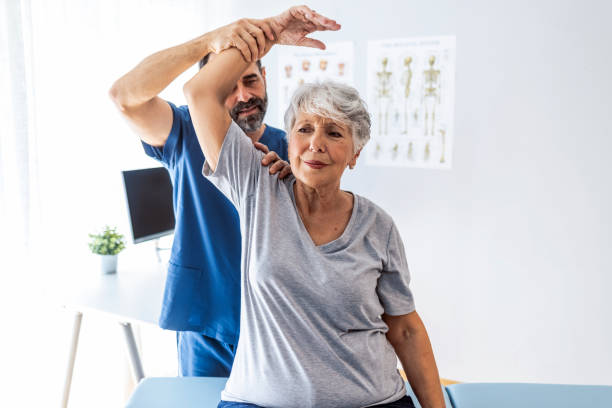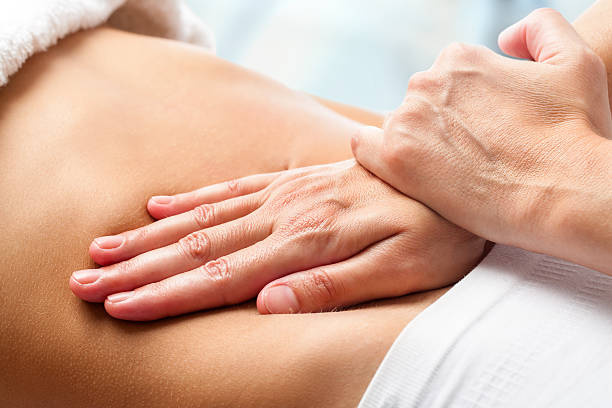Your body’s circulation is responsible for directing life-supporting blood throughout your entire system 24 hours a day. When your circulation is not working properly, a number of problems can occur.
Osteopathy is a manual therapy that uses gentle manipulation to facilitate your body’s natural ability to self-regulate and self-heal. Manipulation transferred through the musculoskeletal system can enhance immune function and improve circulation.

Joints
Osteo Watsonia use a variety of hands-on techniques to reduce pain, improve joint movement and encourage blood flow. They use gentle manipulation and stretching along with soft tissue massage to release tension in the muscles, increase joint flexibility and boost your overall health and wellbeing.
Osteopathic treatment is non-invasive, so there are no risks associated with osteopathic treatment. However, as with all treatments, you may experience some soreness or stiffness following your session. This is common, and it should resolve shortly after your appointment.
Your osteopath will begin by taking an in-depth history of your symptoms, focusing on the areas that are causing you discomfort. They will then carry out a physical examination of the area(s) in question, including palpating your muscles and joints to feel for tightness or restriction. They may also ask you to move in certain ways to assess your mobility and range of motion.
A treatment plan will then be developed based on your individual needs, and this will include osteopathic manipulations of the muscles and joints, as well as soft tissues. In addition to boosting circulation, this will help to relieve muscle tension and improve the function of the circulatory system, digestive system and lymphatic drainage systems. By reducing stress and anxiety, osteopathic treatment can also help to alleviate symptoms of conditions such as depression, headaches and insomnia.
Ligaments
Osteopathy focuses on the body as a whole and is based on the philosophy that if one part of your musculoskeletal system is not functioning properly, then it affects every other part. This is why an ankle injury may lead to knee or hip pain and back problems. The founder of osteopathic medicine, Andrew Taylor Still, studied the attributes of good health in order to better understand disease and founded osteopathic techniques that aimed to restore normal musculoskeletal function, TriHealth explains.
Your ligaments attach bones to other bones and hold your muscles, tendons and other soft tissue together. When your bones move out of alignment, they create tension on the ligaments and inhibit proper movement. Osteopaths manipulate the joints in your body to bring them back into alignment, reducing stress on the ligaments and encouraging blood flow to the area, which helps them resume their normal, pain-free functions.
A common treatment for neck and upper back pain is osteopathic manipulation of the spinal column. This repositions the spine, improving its ability to function, and can also help with breathing, especially if you spend a lot of time hunched over a desk at work. Osteopaths can also use their hands on the ribcage to encourage the diaphragm to breathe freely. This is called the strain-counterstrain technique and can be helpful for asthmatics, infants with colic and pregnant women with lower back and pelvic pain.

Muscles
Every joint in your body is connected by muscles and ligaments. Keeping these muscles healthy and strong is crucial to the health of your joints, bones, and overall wellbeing. Osteopathy is a form of manual therapy that uses gentle manipulations to help improve muscle and joint health. It can also boost circulation through the blood flow to the muscles, tendons, and ligaments, allowing them to receive nutrients and oxygen.
Everyone has their own specific muscle ailments and osteopathy treatment will be tailored to your needs. However, a general osteopathic treatment uses techniques such as palpatory diagnosis and manipulation of the musculoskeletal system to release muscle tension and restore balance and function.
Osteopathy can also help to relieve stress and tension, which is known to elevate blood pressure levels. It can also promote relaxation, reduce pain and improve posture – all of which can help to lower blood pressure naturally.
Another important way osteopathy can help improve circulation is through gentle manipulation of the vagus nerve. This can balance the autonomic nervous system, which slows the heart rate and helps with digestion. It also boosts the immune system to help fight infection and heal tissues. It can also reduce back and neck pain, headaches, and fatigue and enhances overall wellbeing and mood. This can even help with sleep problems, which is common in people who suffer from chronic pain.
Lymphatics
Osteopaths use gentle manipulation and mobilisation of the muscles, soft tissues and joints. This is sometimes called osteopathic manipulative treatment (OMT) but they may also use other techniques, including percussion and stretching. They do this while you are standing, seated or lying down. You may hear a sound during a manipulation but this is not your bones cracking or popping into place, it is caused by the release of gases bubbles in the synovial fluid that surrounds the joints.
Ostopaths are trained to assess the musculoskeletal system, including the nerves, blood vessels and lymphatic system. This enables them to identify and address imbalances, which improves the flow of oxygen and nutrients throughout your body. This can help to restore your posture, ease aches and pains and alleviate neurological, respiratory and digestive issues.
The lymphatic system consists of small, thin vessels (lymph capillaries) that take up fluid from the tissue and larger ones that contain one-way valves to prevent backflow of the fluid. Lymph vessels then transport the fluid to the lymph nodes, which are located in our armpits and groin.
If your lymphatic system is not working well, you might experience a variety of symptoms, such as post-injury swelling that doesn’t resolve, swollen glands, a feeling of heaviness in the arms or legs, persistent thrush, recurrent infections and a general feeling of being unwell. By using a variety of lymphatic drainage techniques, osteopaths can help to optimise the function of your lymphatic system.




